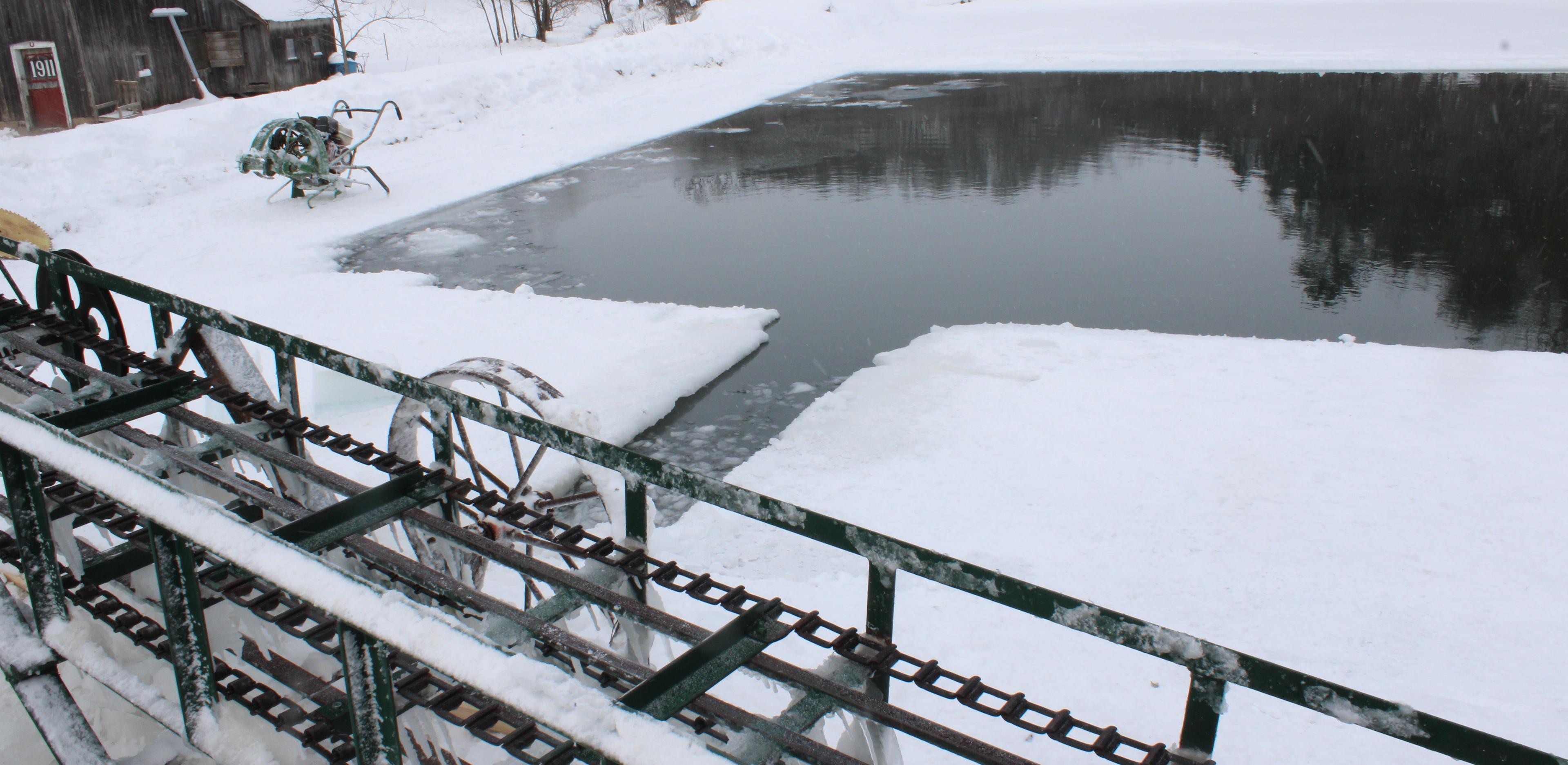
Rooted
Harvesting Ice Blocks on a Bitter Winter Day
Snowflakes gently fell across the valley where a group of hardy Plain community members gathered to harvest ice. The Wisconsin landscape looked serene and welcoming, but it was a brutal 10 below zero on this mid-January day. An ideal time to harvest ice.
The cold wasn’t much of a bother to them. Harvesting ice takes a lot of physical endurance. In two days, about a dozen men harvested 300,000 pounds of ice. That’s about 75 wagonloads of ice to keep coolers full at about 34 degrees all year long (and beyond).
The sun had just risen and they hitched their wagons to horses and made their way down a snow-covered drive to a small pond. They brought tools: chainsaws, pitchforks, ice saws, rope, an “ice elevator” and ice tongs. (Not the stainless steel ones used to fill a glass for mocktails. These are heavy-duty ice tongs used to lift thousands of 60- to 80-pound blocks of ice!)

A man holds a block of ice in tongs at a farm in southwestern Wisconsin.
One Ice Harvest, Numerous Advantages
It’s two long days of harvesting ice but it benefits many people and the planet. Seventeen families will have ice until next winter. With no electricity, it’s a centuries-old way to keep food safely refrigerated in an eco-friendly manner.
Organic Valley farmer Joas Lambright uses the ice to fill the cooler to chill his eggs — eggs that end up on the shelves sporting the Organic Valley logo. He is not the only Organic Valley farmer who harvests ice to keep their goods cool. Ice is the energy Plain community members use to keep products cool — not fridges dependent on electricity.
Read more about the Lambrights’ ice house here.
The few days of harvesting ice include plenty of food and hot tea to get the crew through the day. “We can only make this happen with the effort everyone puts in together,” Lambright said.
Why Do the Amish Harvest Ice?
Many Organic Valley farmers harvest ice: About 43% of Organic Valley farmers are members of the Plain community, including Amish and Mennonite.
The Lambright family’s homemade ice house has two vents that can be opened to let the proper amount of cold into the adjoining egg cooler. A temperature recorder ensures the eggs that end up on store shelves are kept at the required temperature to properly store eggs and meet Organic Valley quality standards.
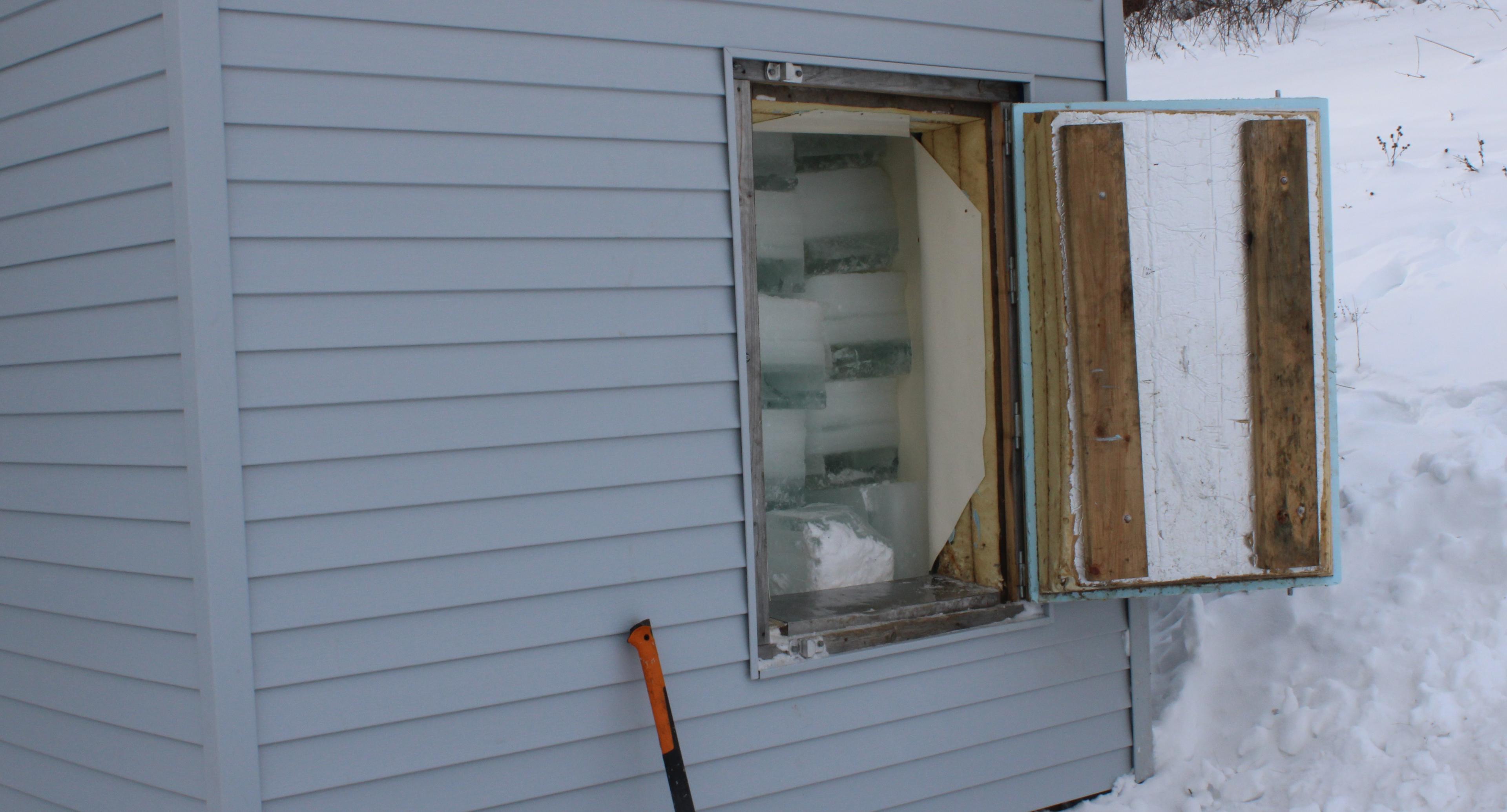
Ice is stored in a room attached to the Schrocks’ home.
Neighbor Andrew Shrocks’ fridge stays a steady 34 degrees Fahrenheit thanks to an 8-by-8-foot ice house. The ice is placed in the ice house from an outside door that attaches to a room accessible from the interior of the house where perishables are stored.
There is a drain at the bottom of the ice house to let the water out as it melts. But it will take a long time to melt — it will last through the winter and beyond. Some people throw out the remaining ice each year, but some have kept piling chunks on top of old ice for nearly five years.
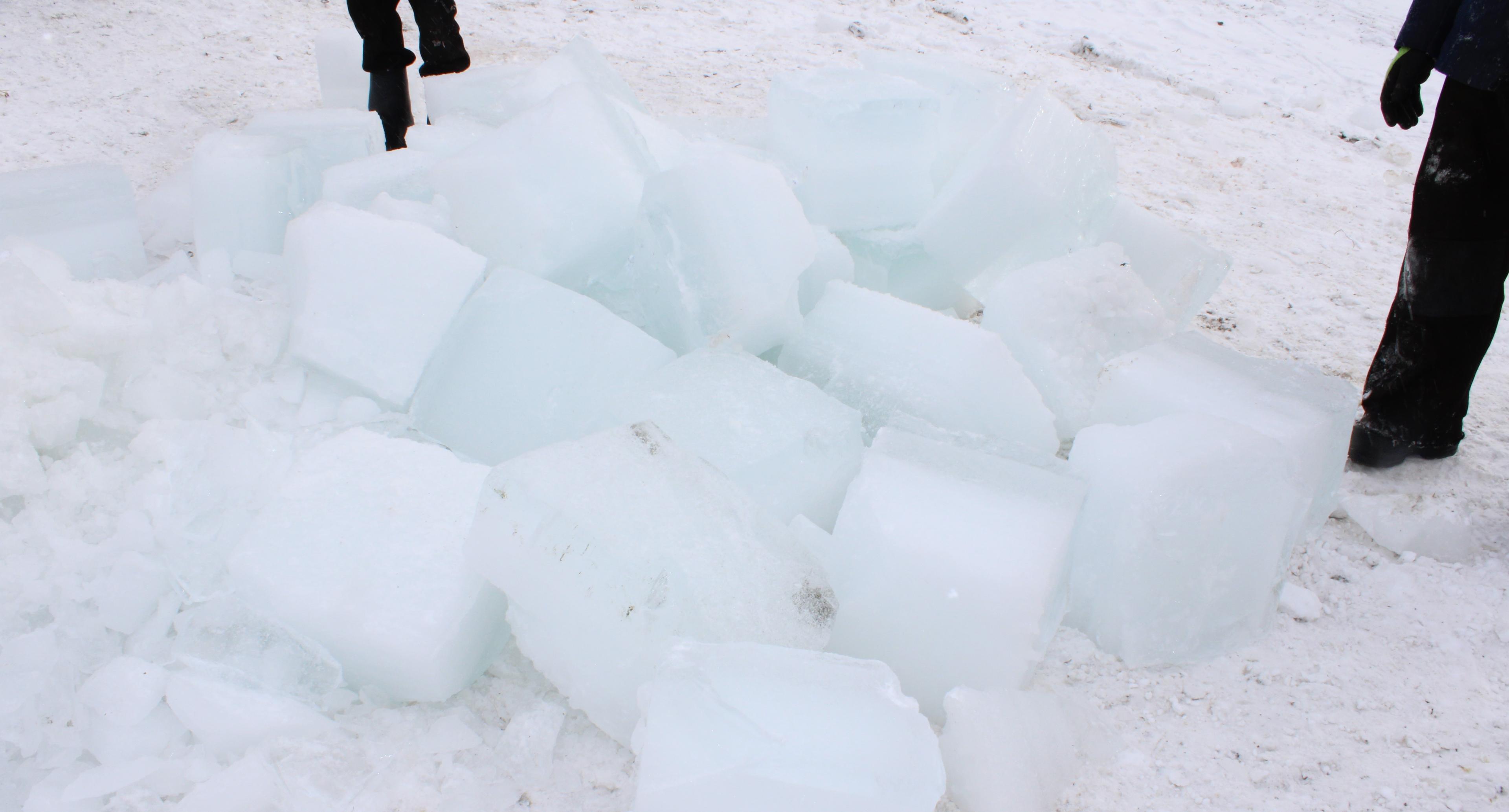
The crew pulls excess ice blocks from the pond to ensure children have a smooth place to ice skate when the pond freezes again.
The Future of Ice Harvests
Climate change brings yo-yoing temperatures and a lack of a solid freeze on lakes and rivers. Thick clear, blue ice that stores the longest is increasingly harder to find and harvest. Emission-heavy mechanical cooling methods have replaced a relatively sustainable industry, built off of a naturally occurring resource.
Farmers on our small organic family farms have an intimate connection to the resources around them and are cognizant of this in their farming and ice harvesting practices. They harvest ice from ponds on private land.
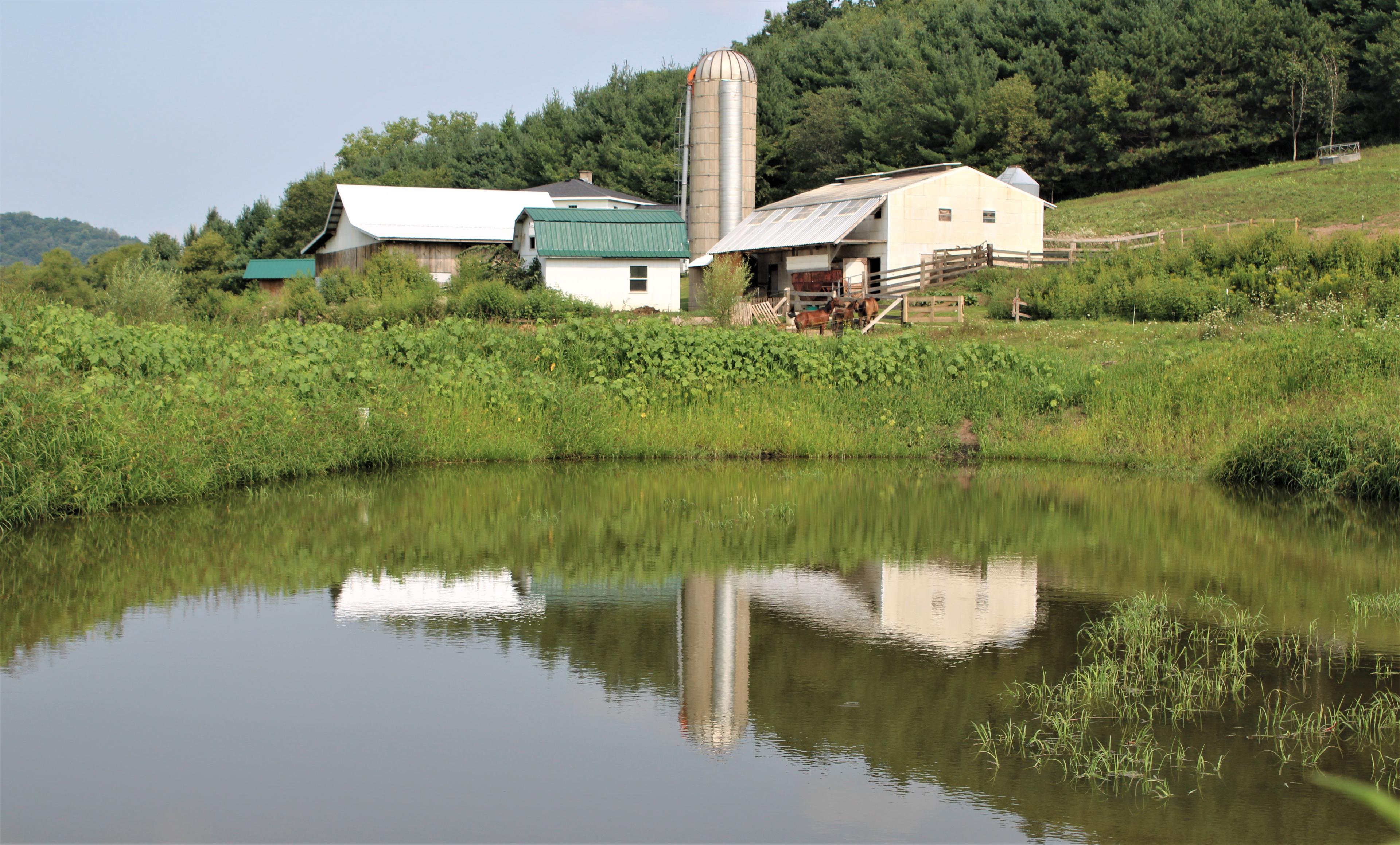
A look at a pond near the Lambrights’ home that is harvested for ice once the cold sets in.
How to Harvest Ice?
The crew ensures the ice is safe and then one man walks onto the ice and cuts through the ice with a chainsaw to ensure the blocks will be as thick as they’d like.
Once the ice is determined safe, one person is responsible for sawing using Lambright’s homemade ice saw. This has a guide so the ice chunks will be uniformly cut at about a foot wide. They saw into the ice, leaving about 2 inches uncut. When they are ready, they pry the last few inches of the pieces apart and guide them across the water. They use rope, pitchforks and other implements to push the ice toward a channel they cut earlier that leads to an ice elevator.
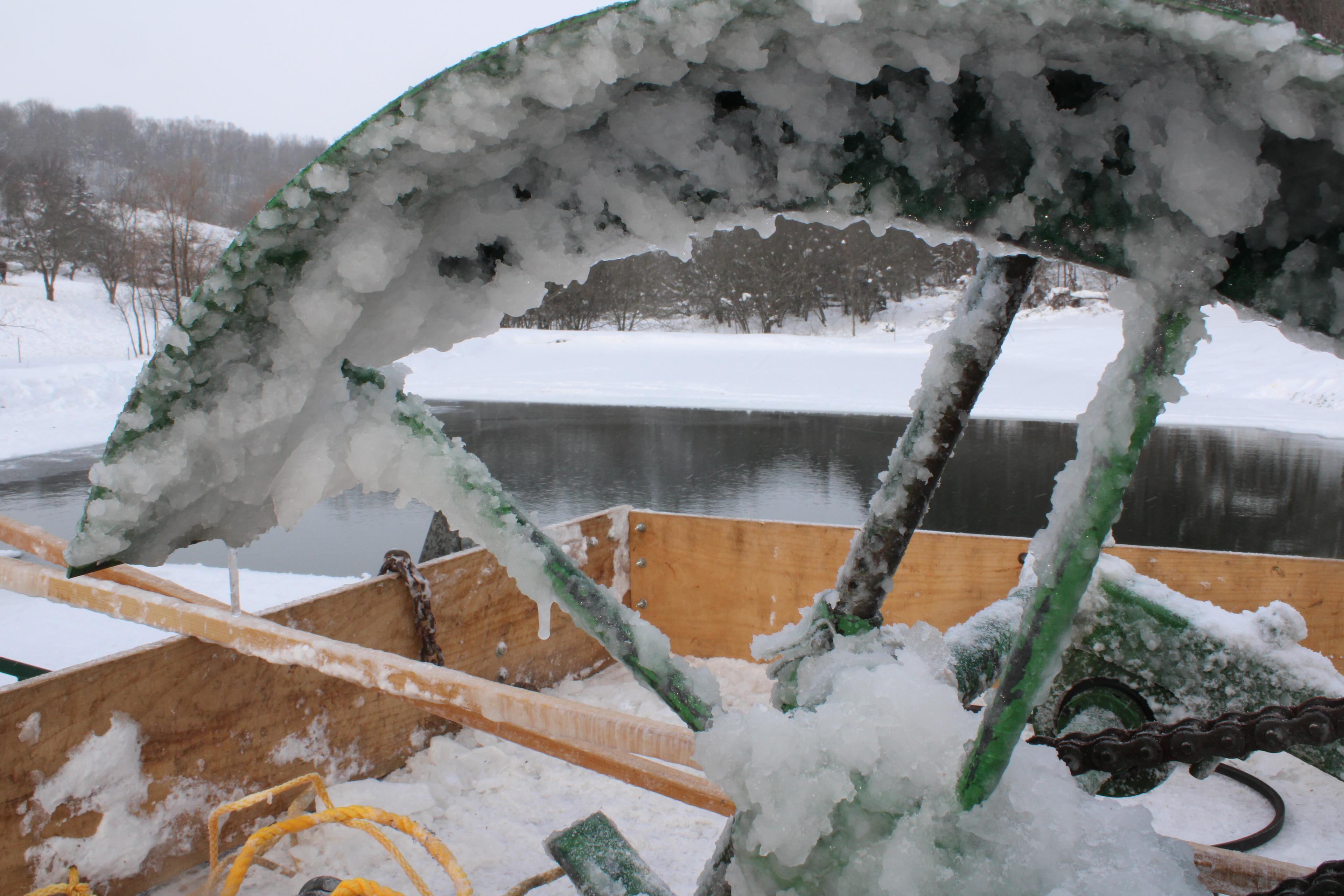
An ice saw rests in the back of a wagon after hours of use.
Tools Used During the Ice Harvest
1. Horse plow
2. Ice saws
3. Hand marker
4. Pulley and rope
5. Ice tongs
6. Ice hooks
7. Pointed bar or splitting fork
8. Straightedge
9. Ice ax
In the 19th and 20th centuries, farm neighbors often co-owned the tools and worked together to harvest ice — just like many communities do today.
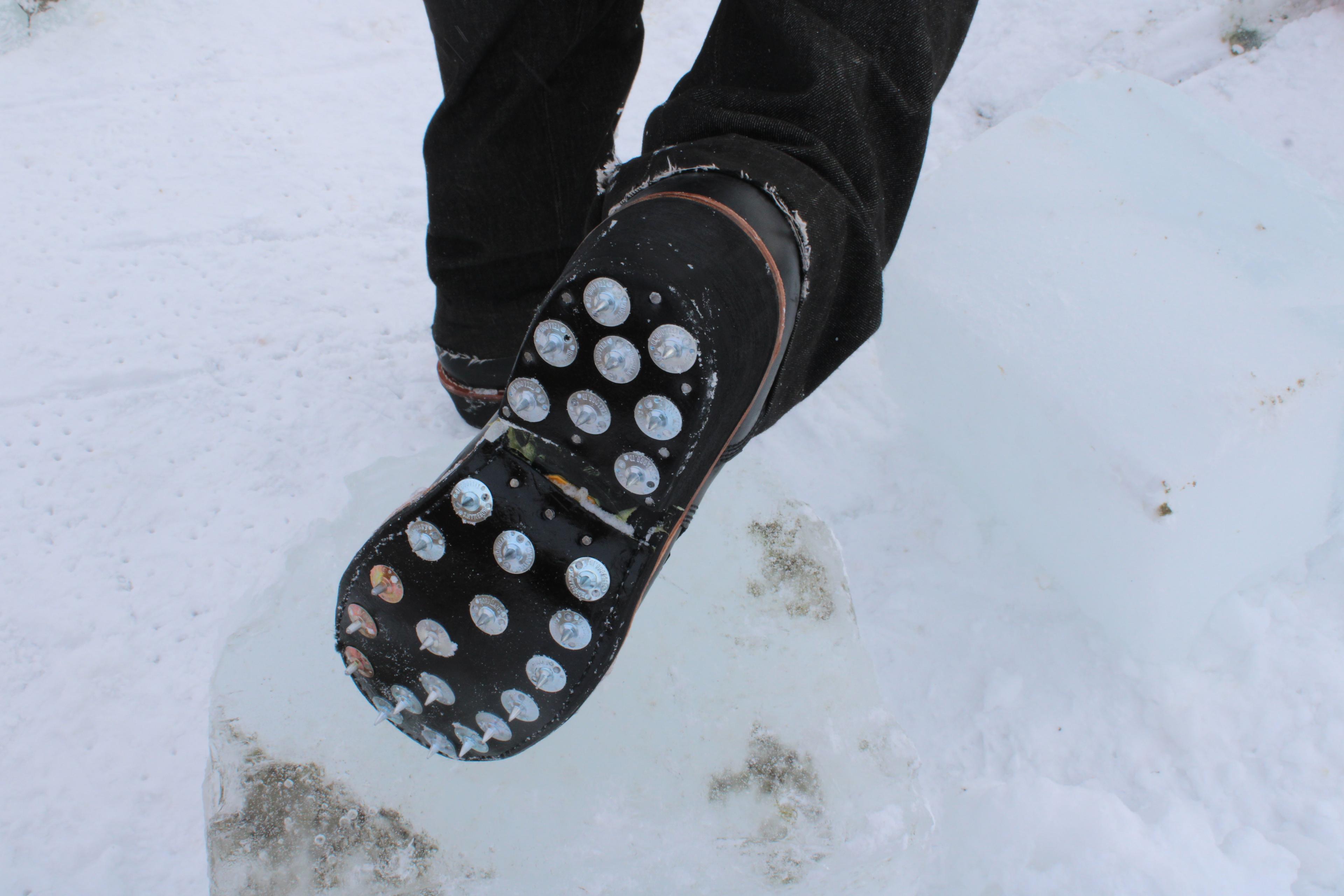
A good set of boots with cleats is an important "tool" to avoid falls during the ice harvest.
The Lambright crew pulls the ice onto an elevator that drops it into wagons. Massive horses pull the ice load to each family’s home. The crew tosses any extra ice chunks out of the water so that when the pond refreezes the neighborhood children can ice skate without obstructions.
Cutting the ice and loading is the easy part, the harvesters agreed. The real work begins when they get home and have to unload each 80-pound block by hand to store in Amish ice houses.
Surprisingly, the colder the better for ice storing. It’s advantageous to unload ice on a really cold day so it doesn’t melt and get its handlers’ clothing and gloves wet and cold — making for an even chillier day of unloading ice.
“It’s a lot of work. It’s fun when you get going and it’s very satisfying when you are done,” Lambright said.
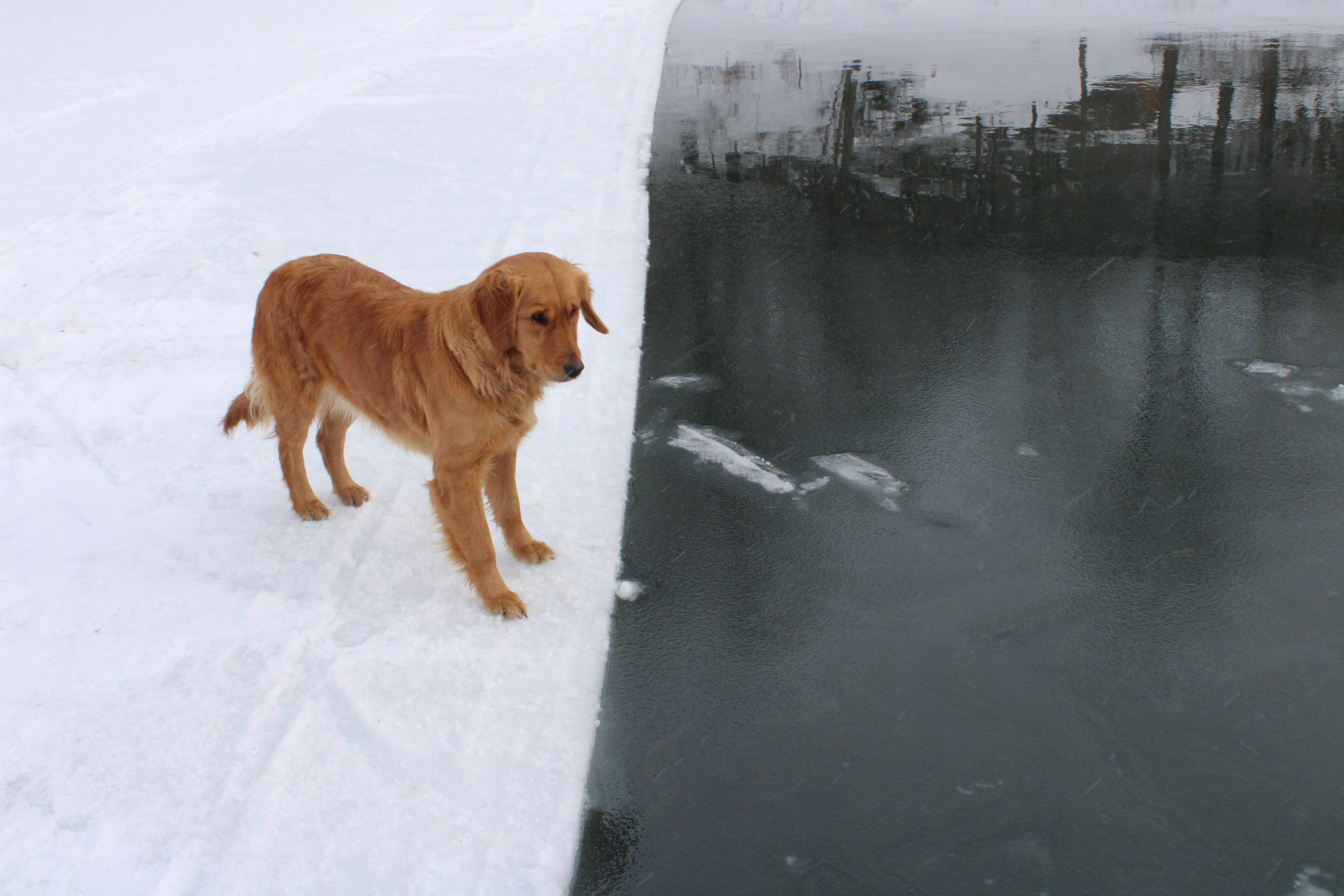
A dog stands by as the Plain community harvests ice in southwest Wisconsin.
Why Did People Harvest Ice in the Past?
Years ago, Plain families were not the only communities storing ice for refrigeration.
In the past, ice was delivered to houses similarly to milk, with ice trucks making the residential rounds and going door to door with custom-sized ice blocks for each family’s ice chest. Ice made it possible to keep dairy, meat and fish longer — and enabled people living farther from cold weather to store these foods as well.
Businesses used ice to chill and distribute their products. The brewing industry used 1 million pounds of ice every year. Railroad companies would stop every 200 to 300 miles to re-ice their shipments, to keep products chilled. Dairy farms needed an estimated 5 tons each year to store cream for deliveries — about half a ton of ice per cow. Whole milk required even more — at “1.5 tons per cow in the North and 2 tons per cow in the South,” according to the 1928 Farmer's Bulletin.
Ice baron William Tudor of Boston regularly shipped Massachusetts ice harvested on his father’s farm and lakes to Bombay, India, and Havana, Cuba, where it sold for 25 cents, that’s $4.57 today, per pound. International ice transport enabled people in India to have ice cream for the first time in 1833. The ice industry also enabled lobster and other seafood to travel from Maine to new markets across the United States.
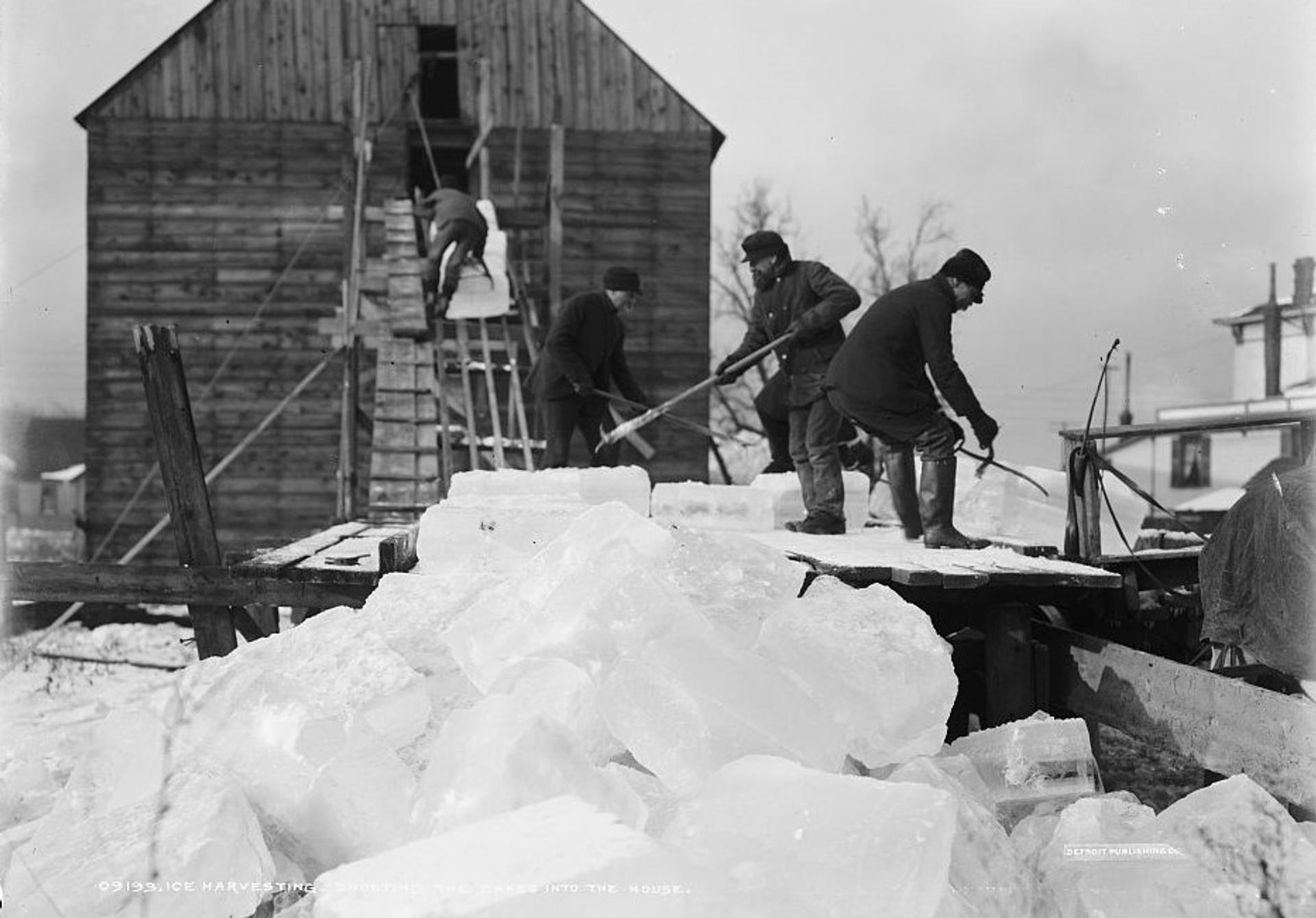
Men prep ice for storage in this circa 1903 photo from the Library of Congress collection.
The History of Ice Harvesting
In the early 19th and 20th centuries, before mechanical refrigeration, people needed a way to keep food stores cold on farms and trains and in kitchens. Ice harvesting was a major commodity — at its peak, the U.S. ice trade was a $1 billion industry by today’s standards ($28 million in 1899). It was in the top three U.S. exports after cotton.
American ice was first harvested in the Midwest, Northeast and Pacific Northwest, including Wisconsin — starting in 1800. Around 1820, it expanded to Greenland and Norway as demand for ice grew across America and Europe. By the 1880s, Americans alone consumed more than 5 million tons of ice annually.
The people harvesting the ice were typically farmers, carpenters and lumberjacks. The abundance of lakes and large rivers in these states made for an annual ice harvest. Dozens of men would work day and night for weeks, cutting tons of ice before the spring thaw.
View a silent film of a 1919 ice harvest courtesy of Farm Collector Magazine:
Artificially produced ice and mechanized chilling would eventually replace the “frozen water trade.” In the late 1800s, making artificial ice became more efficient, drastically decreasing the amount of natural ice needed. Mechanical refrigeration and an increase in demand made ice harvesting, or the “frozen water trade,” an impractical and less cost-effective option to chill foods in households, trains and businesses.
Harvesting Huge Ice Blocks
The ice harvest typically began in January, when at least a foot of ice would grace the surface of lakes, ponds or rivers. First, the snow was scooped from the surface and a giant cut was made in the ice using a horse-drawn plow or tractor hooked up to a circular saw.
Then, ice harvesters used 6-foot long hand saws to cut smaller, rectangular blocks of ice — usually about 22 inches by 22 inches. Those 200-300-pound blocks were floated through the newly open water using sharp-hooked tongs or long pitchforks/ice hooks and pushed up a ramp onto a horse-drawn wagon or sled.
The blocks were taken to an ice house. Each community had a wooden or concrete storage building based on the amount of ice a community needed. The blocks were stacked tightly and a layer of sawdust added to keep them from sticking together. Up to 12 inches of sawdust was used as insulation on the floor and interior walls of the ice house, according to the 1928 Farmer's Bulletin.
Surprisingly, ice stored in ice houses in this manner stays cool for up to three times longer than commercially made ice. Why? Naturally occurring ice has fewer impurities than ice made using tap water, it is also created and harvested in colder temperatures (outside), and the size and shape of the ice blocks — all contribute to it taking a longer time to melt. The cost of storing ice was estimated at roughly $3 a ton in the 1920s, or about $50 today.
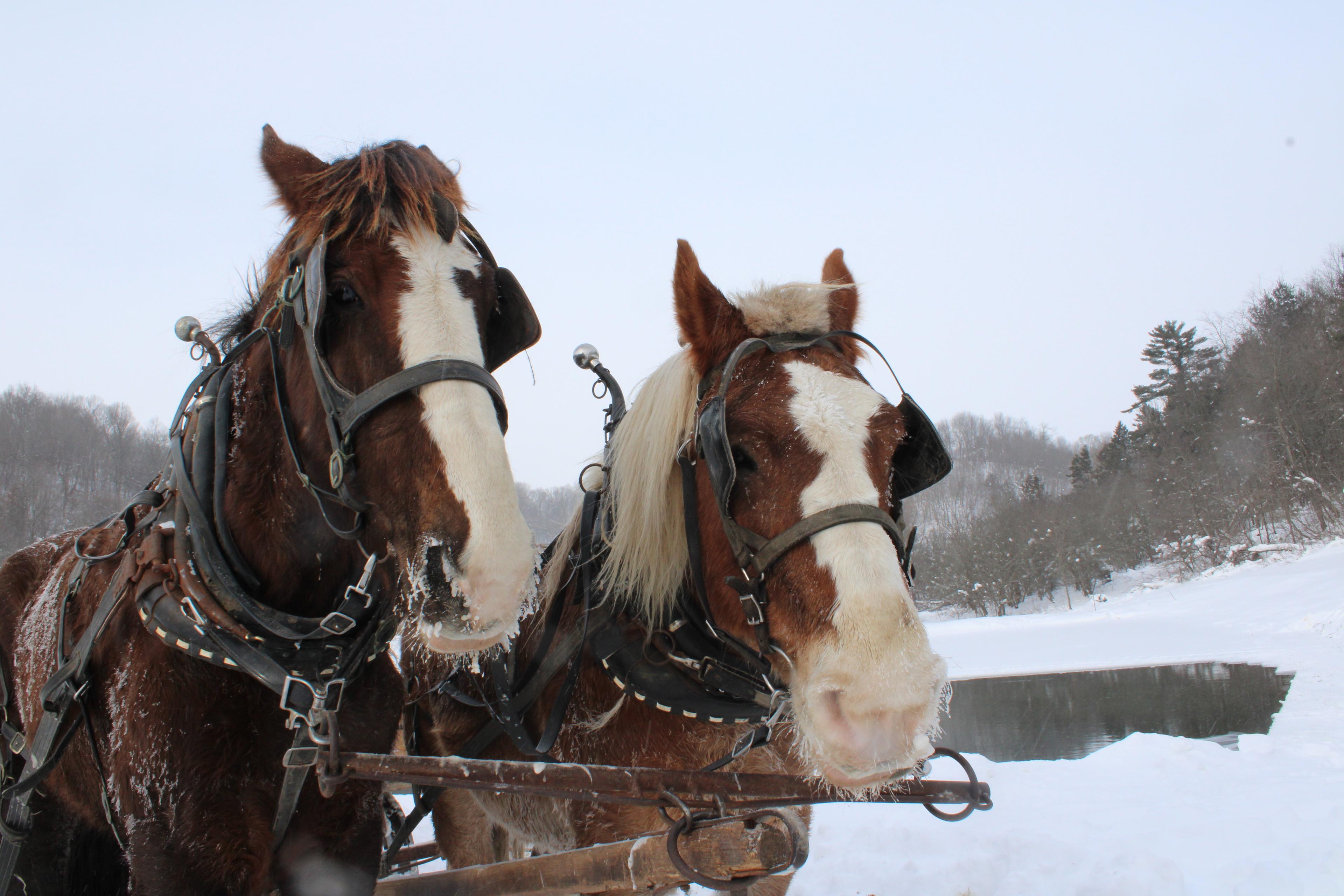
A team of horses stand in front of the recently harvested pond.
Is Ice Harvesting Still a Thing?
Plain community members are not the only ones still harvesting ice.
Junction City, Wisconsin, Three Rivers, Michigan, and other cities across Maine and North America host annual ice harvests. Three Rivers hosts an Ice Harvesting Day so youth can learn the trade’s history and methods. In Junction City, the ice is cut and stored for use at summer firemen's picnics and festivals. In other cities, it is used for ice sculpture competitions. In Maine, the Thompson Ice House Harvesting Museum hosts an annual ice harvest every February.
It can be hard to imagine living without such conveniences as having appliances that spit out ice chunks at the push of a button. So many communities have continued a way of life that does not allow for modern “conveniences” — without complaint or hesitation. The ice harvest is another example of Plain community farmers coming together to support their communities.
_____________________________________________________________________________________
Article written by Hannah Wente and Jennifer McBride. Wente writes about food, health and lifestyle topics from her home base in Madison, Wisconsin. McBride, also a Wisconsin resident, is Rootstock’s editor. She is grateful for the communities that welcome her in to share their stories. Email McBride at Rootstock@organicvalley.com.
Related Articles
- Tags:
- farm life,
- organic & sustainable living

















